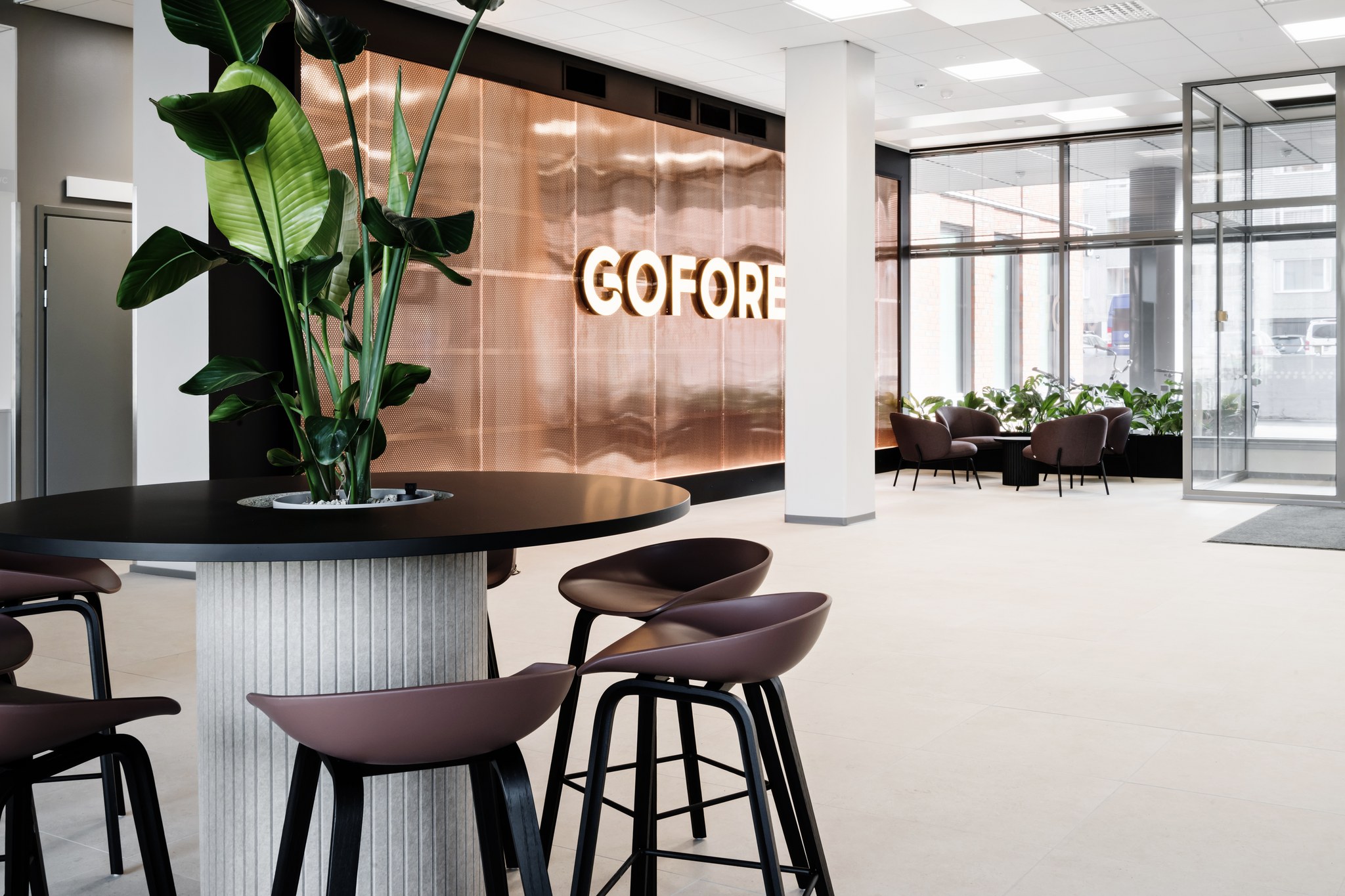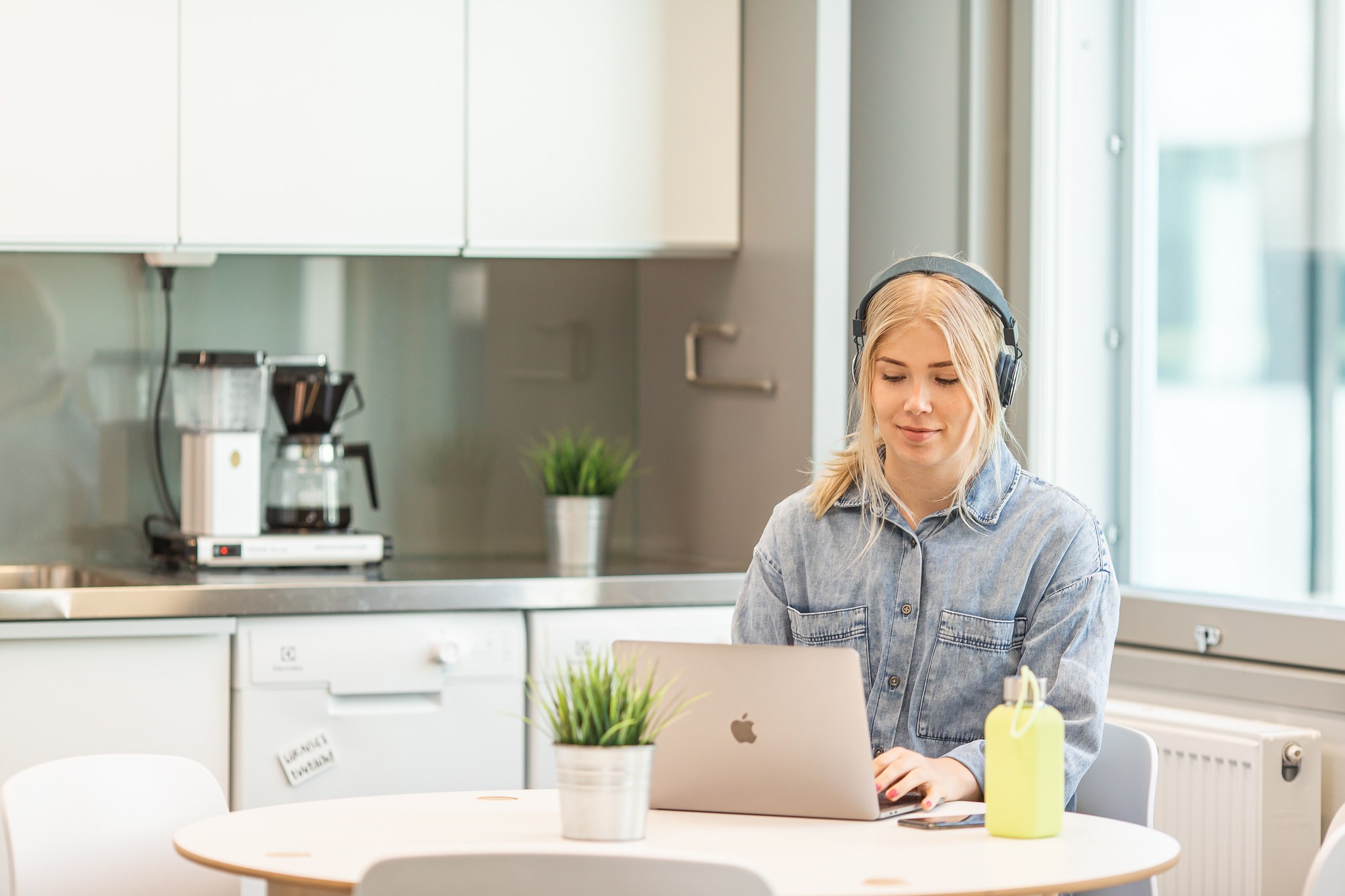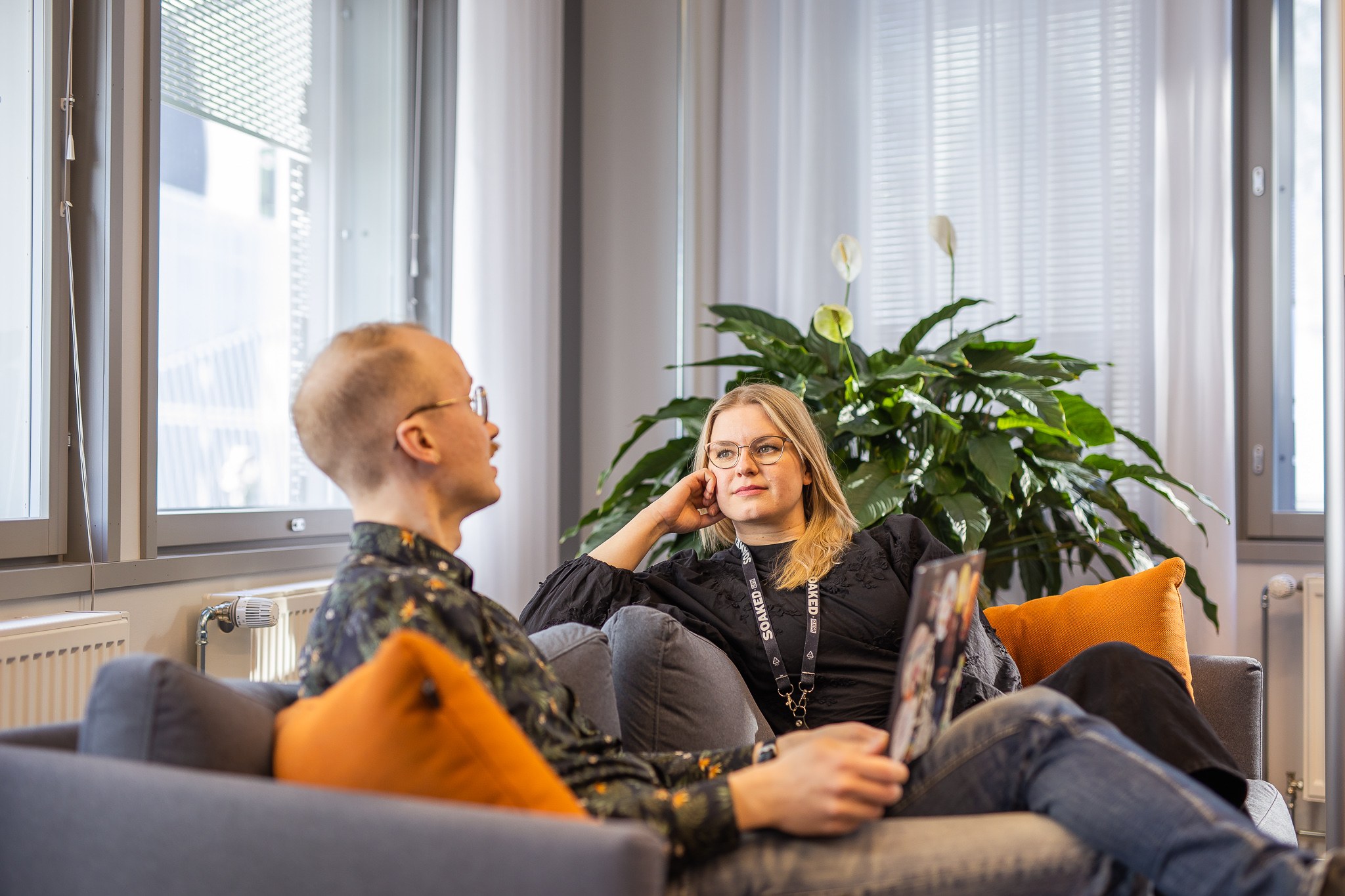The ongoing public debate around remote versus in-office work practices continues. While this debate is driven by various perspectives and concerns, an intriguing angle is how hybrid work can support cognitive performance, nurture the brain’s ability to learn and focus, and promote recovery and relaxation.
The benefits of remote work for the brain are evident: most of us can concentrate on demanding tasks in a familiar, calming environment. Remote work may also support effective recovery, allowing breaks during the day or time saved from commuting to be used in brain-friendly ways, such as taking a nap.
But does an office day always have to be a draining environment that hinders focus and bombards the senses with stimuli? At Gofore, we believe an office can be much more than that. A brain-friendly office is a space that considers overall well-being and the unique needs of the human brain. This focus has guided our recent office projects, including our headquarters in Tampere and our new offices in Helsinki and Munich, which will open early next year.
Recovery at the office: Is it even possible?
The foundation of a brain-friendly office lies in a comprehensive understanding of the brain and human well-being. Beyond supporting specific tasks, an office can serve multiple purposes, such as being a gathering place for work and leisure, supporting shared hobbies, encouraging movement, and promoting restorative breaks from work.
At our headquarters, in addition to workspaces, we’ve incorporated amenities like a game room, sauna, band room, nap room, massage space, gym, tools for ergonomic breaks, and healthy snacks in the fridge to support the day.
In addition, an office can build on holistic well-being by incorporating elements that specifically enhance cognitive performance at work. The human brain hasn’t evolved much over the past 20,000 years, and as a species, we’re wired to constantly monitor our environment through sight, sound, smell, and touch.
To support focus, it’s crucial to limit sensory distractions and reduce the brain’s need to constantly react to its surroundings.
Here’s how we’ve tackled this challenge:
Varied workspaces
Different types of spaces are key to managing sensory stimuli. Break areas and collaborative spaces involve noise and interaction, while some tasks benefit from shared workspaces that enable easy communication and idea-sharing. In addition, there must be dedicated focus areas where sensory distractions are strictly minimized. It is also important to consider the diverse needs for workstations and chairs to enable optimal focus.
Color schemes & interior design
Calm, light colors in workspaces and harmonious interior choices help reduce visual stimuli for the brain. Adjustable lighting solutions also play a role, allowing spaces to be tailored to different preferences and tasks. By avoiding strong contrasts and bright colors or lights, the brain naturally shifts toward a calm and safe state.
Acoustics and scents
Poor acoustics and noise are common sources of sensory overload in offices. We’ve paid special attention to separating spaces into distinct sound zones and enhancing acoustics with elements like acoustic panels in meeting rooms and materials that absorb sound.
Strong scents can also be unexpectedly overwhelming. Setting office rules for scents and creating scent-free zones with dedicated workspaces can help reduce this sensory burden.
Designated storage solutions
Cognitive strain caused by “meta-work” – non-essential tasks surrounding actual work – can be reduced with clean, functional storage solutions. Consistent storage layouts across different rooms or floors make it easier to locate items without unnecessary effort.
Workstation placement and dividers
Workstation placement should minimize distractions and noise. While some work thrives in open spaces, other tasks benefit from more enclosed workstations with dividers or walls that block visual and physical distractions. We’re experimenting with different layouts to see how focus improves when visual barriers reduce distractions, and seating arrangements minimize movement or activity behind the worker.
Indoor plants and natural light
Our brain, evolved for life as hunter-gatherers, thrives on natural light, which supports circadian rhythms. Indoor plants not only brighten the mood and improve air quality but also replicate natural environments, aiding cognitive functioning.
Shared rules and collaborative development
Everyone’s brain works differently, so preferences for spaces and routines vary. Offices must involve individuals in setting shared rules and constantly refining practices to make the environment safe and welcoming for all, including recovery and rest. Shared rules also reduce meta-work, provide clarity, and help employees focus on their tasks.
Listening to the entire workforce during office planning ensures that the best ideas benefit everyone. For example, through our neurodiversity work, we discovered that sensory toys can help focus during meetings. Now, they’re available in all our offices!
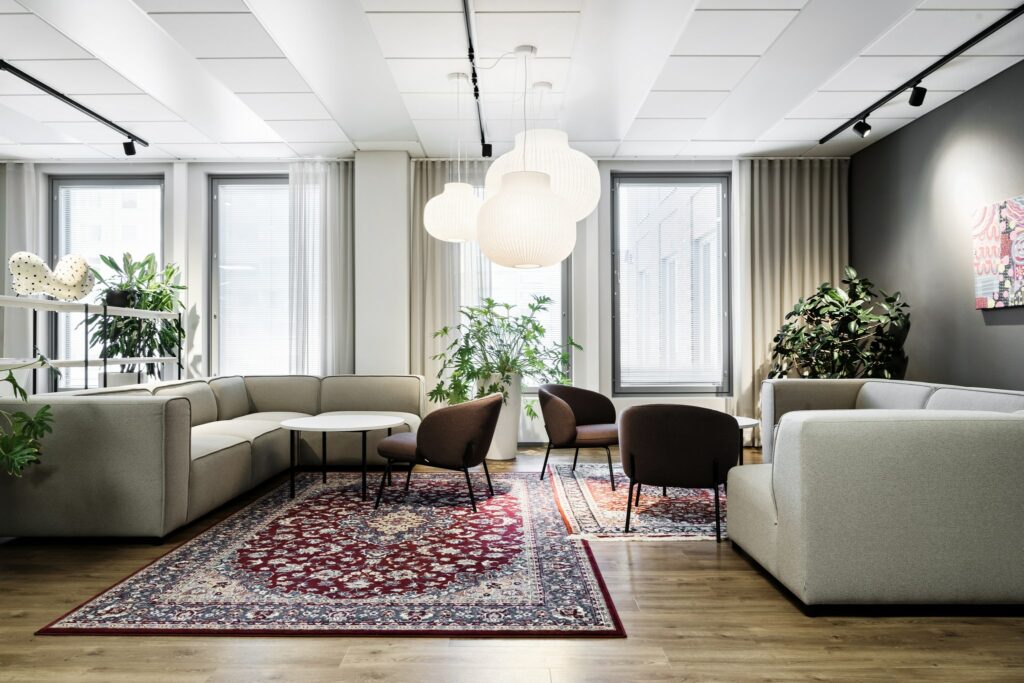
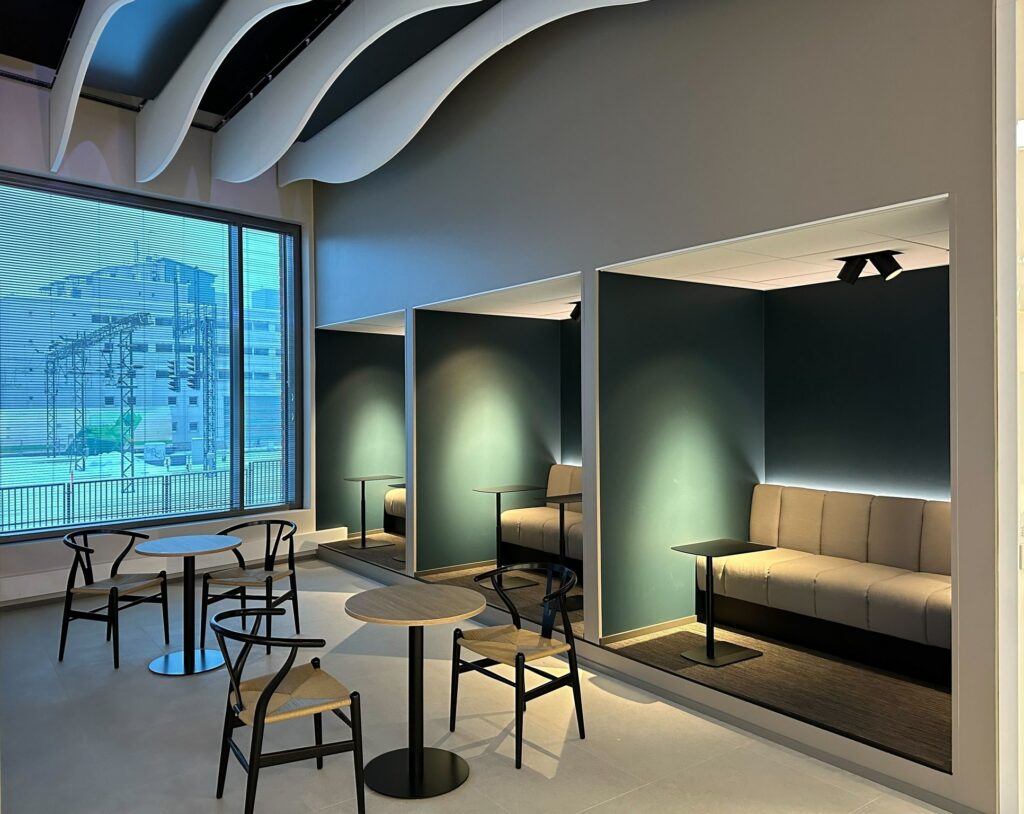
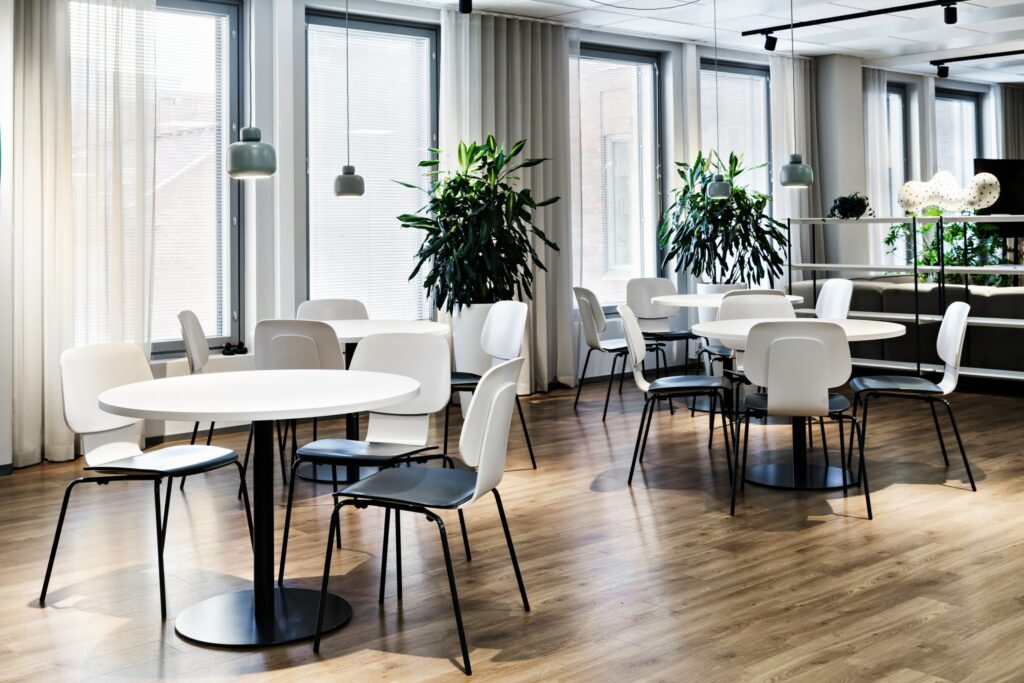
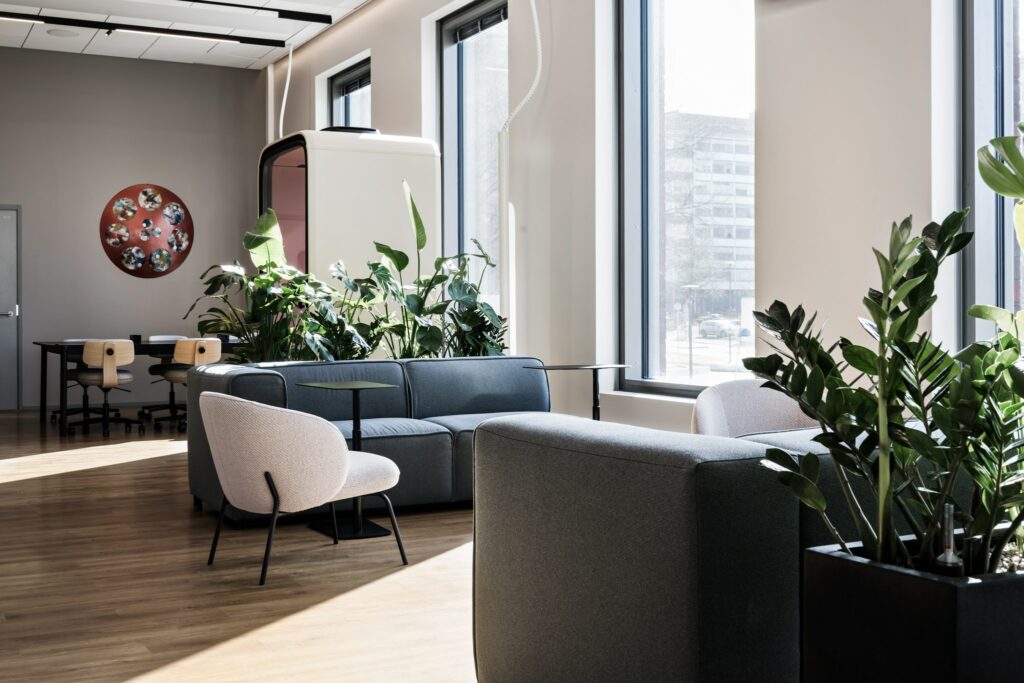
How do we measure success?
At Gofore, work is hybrid, and we regularly measure employee satisfaction and well-being related to the work environment. One of the statements in our Employee Experience survey is: “My primary work environments support my productivity and well-being.” Of respondents, 83% strongly or very strongly agree with the statement.
We also track how eNPS varies by the location of work. We’ve been pleased to see high satisfaction levels regardless of the location selected – office, home, client premises, or hybrid. Interestingly, eNPS has increased most among hybrid workers, surpassing Gofore’s overall eNPS.
The physical work environment is just one element of sustainable, brain-friendly work. Done right, it can significantly contribute to our well-being, creativity, and problem-solving abilities. We encourage others to join us on this journey toward cognitive excellence!
Gofore to win in the Physical Work Environment Category at the Rakli Workplace Awards
